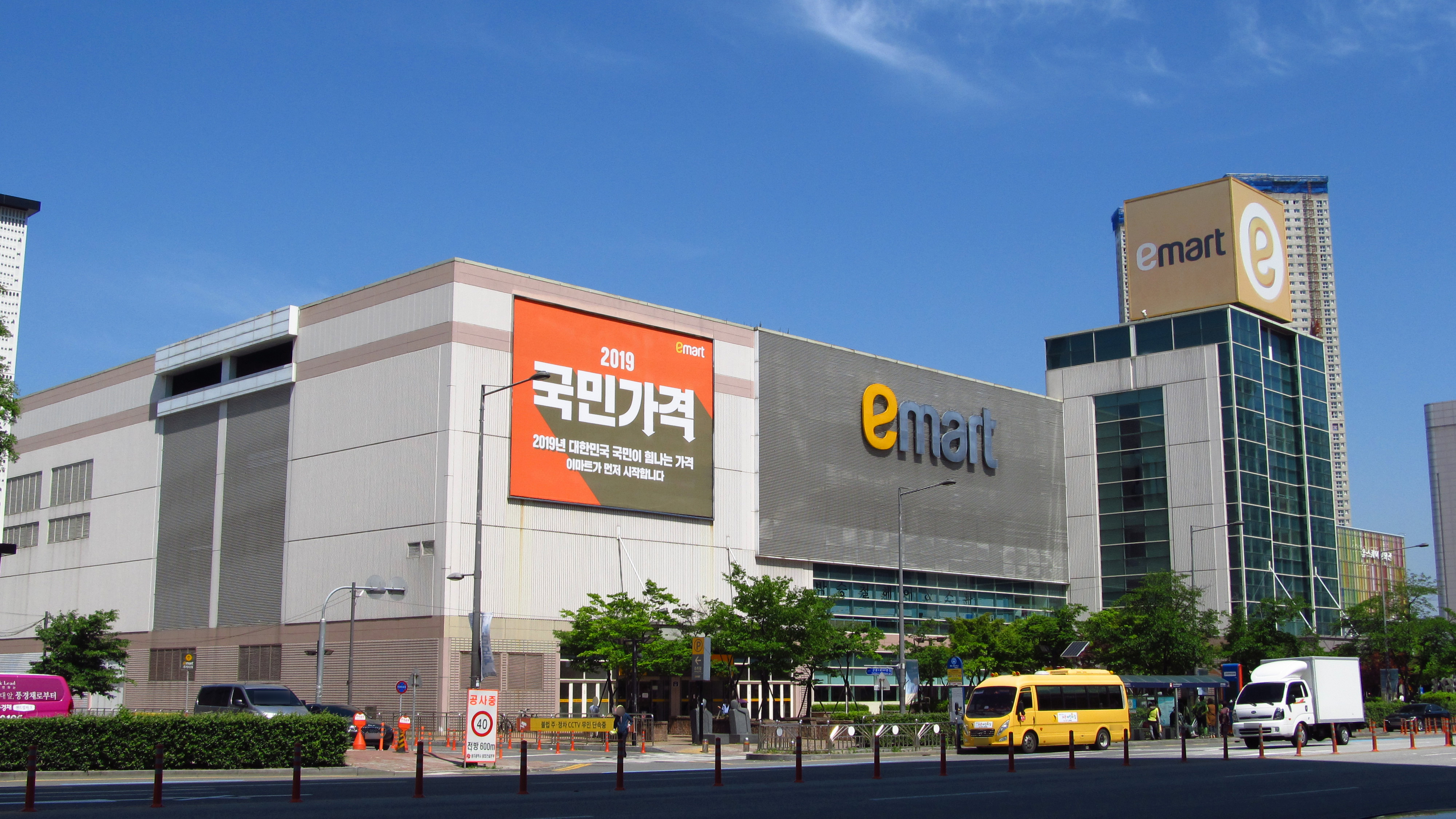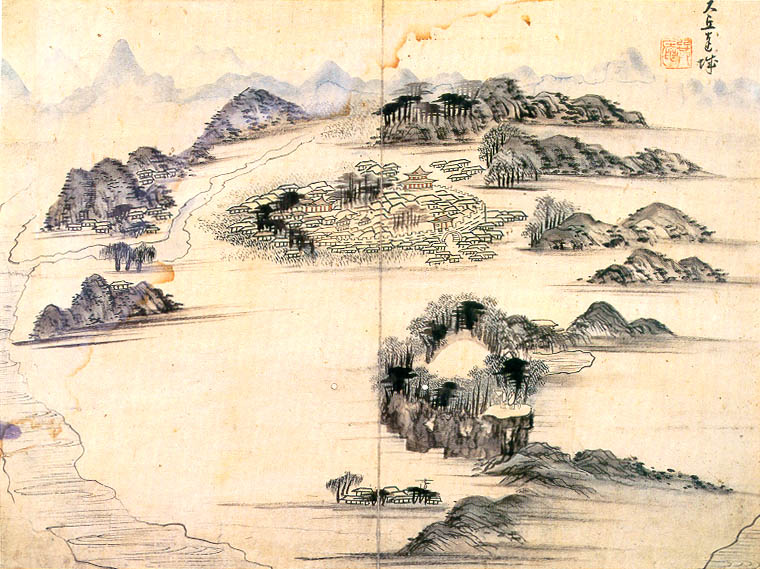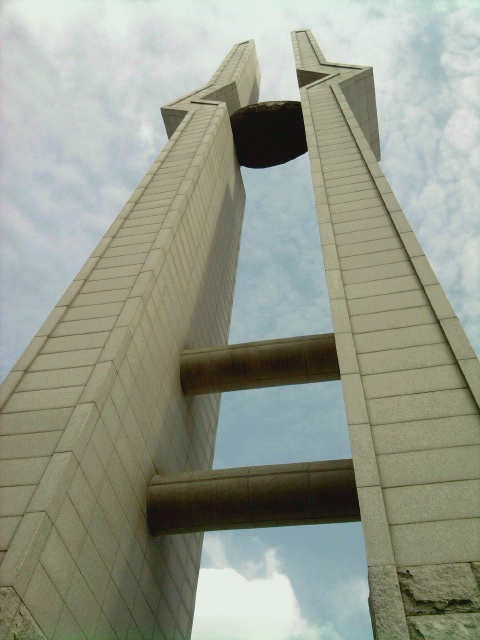|
Gwangjin District
Gwangjin District (Gwangjin-gu) is one of the 25 wards (''gu'') of Seoul, South Korea. It is located on the north bank of the Han River, to the eastern end of Seoul. It was created from neighboring Seongdong District in 1995. Gwangjin District is home to Konkuk University and Sejong University. Characteristics Gwangjin District is characterized by a remarkable variety in its composition. It is home to the Konkuk University campus, the vicinity of which is one of Seoul's top nightlife destinations, as well as Children's Grand Park, an equally popular attraction for children and families. The south bank overlooking the Han River is a densely packed residential district, where high-rise apartment buildings dominate the skyline, yet the heart and northern end of the district are centers for light industry and manufacturing. The district is also a hub for transportation and mail in and out of Seoul, as the Dong Seoul Bus Terminal and the East-Seoul Postal Service Depot link Seoul ... [...More Info...] [...Related Items...] OR: [Wikipedia] [Google] [Baidu] |
List Of Districts Of Seoul
The districts of Seoul are the twenty-five ''Administrative divisions of South Korea#Gu (District), gu'' ("districts"; hangeul: 구; hanja: 區) comprising Seoul, South Korea. The ''gu'' vary greatly in area (from 10 to 47 km2) and population (from less than 140,000 to 630,000). Songpa-gu is the most populated, while Seocho-gu has the largest area. Gu are similar to London's or New York City, New York's boroughs or Tokyo's Special Wards of Tokyo, 23 special wards. Each gu's government handles many of the functions that are handled by city governments in other jurisdictions. This city-like standing is underscored by the fact that each gu has its own legislative council, mayor and sister cities. Each ''gu'' is further divided into ''Dong (administrative division), dong'' or neighborhoods. Some ''gu'' have only a few ''dong'' while others (like Jongno-gu) have a very large number of distinct neighborhoods. List by population and area ''2014 estimate by Seoul Statistics''. ... [...More Info...] [...Related Items...] OR: [Wikipedia] [Google] [Baidu] |
E-Mart
e-mart () is the largest retailer in South Korea. There were 160 stores across the country as of December 2016. It was founded on 12 November 1993 by Shinsegae as the first discount retailer in South Korea. E-Mart is the oldest and largest discount store chain in Korea with total sales volume exceeding US$9.4 billion in 2009. With new store openings and acquisition of Wal-Mart Korea in 2006, E-Mart is enjoying its retail leadership in the discount store market. E-mart offers everything from food to clothes to diapers, and provides a very large variety of merchandise. E-mart has a website, where products can be bought or viewed online. E-Mart is the first Korean retailer to open a retail store in China with the aim to become one of top leading global retailers. In January 2011, there were 27 stores in China. By February 2014, China's store count shrunk to 13 stores. History E-Mart opened its first store in Chang-dong, Dobong-gu, Seoul on November 12, 1993, and opened its first ... [...More Info...] [...Related Items...] OR: [Wikipedia] [Google] [Baidu] |
01-05-gwangjin-en
Increment or incremental may refer to: *Incrementalism, a theory (also used in politics as a synonym for gradualism) *Increment and decrement operators, the operators ++ and -- in computer programming *Incremental computing *Incremental backup, which contain only that portion that has changed since the preceding backup copy. *Increment, chess term for additional time a chess player receives on each move *Incremental games * Increment in rounding See also * * *1+1 (other) 1+1 is a mathematical expression that evaluates to: * 2 (number) (in ordinary arithmetic) * 1 (number) (in Boolean algebra with a notation where '+' denotes a logical disjunction) * 0 (number) (in Boolean algebra with a notation where '+' denotes ' ... {{Disambiguation da:Inkrementel fr:Incrémentation nl:Increment ja:インクリメント pl:Inkrementacja ru:Инкремент sr:Инкремент sv:++ ... [...More Info...] [...Related Items...] OR: [Wikipedia] [Google] [Baidu] |
Sheraton Hotels And Resorts
Sheraton Hotels and Resorts is an international semi-luxury hotel chain owned by Marriott International. As of June 30, 2020, Sheraton operates 446 hotels with 155,617 rooms globally, including locations in North America, Africa, Asia Pacific, Central and South America, Europe, the Middle East and the Caribbean, in addition to 84 hotels with 23,092 rooms in the pipeline. History Early years The origins of Sheraton Hotels date to 1933, when Harvard classmates Ernest Henderson and Robert Moore purchased the Continental Hotel in Cambridge, Massachusetts. In 1937, Henderson and Moore purchased the Standard Investing Corporation and the International Equities Corporation, combining them into the Standard Equities Corporation, the company through which they would run their hotels. Also in 1937, they purchased their second hotel, and the first as part of the new company, the Stonehaven Hotel in Springfield, Massachusetts, a converted apartment building. Sheraton dates its founding to tha ... [...More Info...] [...Related Items...] OR: [Wikipedia] [Google] [Baidu] |
Tokyo
Tokyo (; ja, 東京, , ), officially the Tokyo Metropolis ( ja, 東京都, label=none, ), is the capital and largest city of Japan. Formerly known as Edo, its metropolitan area () is the most populous in the world, with an estimated 37.468 million residents ; the city proper has a population of 13.99 million people. Located at the head of Tokyo Bay, the prefecture forms part of the Kantō region on the central coast of Honshu, Japan's largest island. Tokyo serves as Japan's economic center and is the seat of both the Japanese government and the Emperor of Japan. Originally a fishing village named Edo, the city became politically prominent in 1603, when it became the seat of the Tokugawa shogunate. By the mid-18th century, Edo was one of the most populous cities in the world with a population of over one million people. Following the Meiji Restoration of 1868, the imperial capital in Kyoto was moved to Edo, which was renamed "Tokyo" (). Tokyo was devastate ... [...More Info...] [...Related Items...] OR: [Wikipedia] [Google] [Baidu] |
Akihabara
is a common name for the area around Akihabara Station in the Chiyoda ward of Tokyo, Japan. Administratively, the area called Akihabara mainly belongs to the and Kanda-Sakumachō districts in Chiyoda. There exists an administrative district called Akihabara in the Taitō ward further north of Akihabara Station, but it is not the place people generally refer to as Akihabara. The name Akihabara is a shortening of , which ultimately comes from , named after a fire-controlling deity of a firefighting shrine built after the area was destroyed by a fire in 1869.Cybriwsky, Roman. ''Historical dictionary of Tokyo.''Scarecrow Press, 2011. Akihabara gained the nickname shortly after World War II for being a major shopping center for household electronic goods and the post-war black market.Nobuoka, Jakob. "User innovation and creative consumption in Japanese culture industries: The case of Akihabara, Tokyo." ''Geografiska Annaler: Series B, Human Geography'' 92.3 (2010): 205–218.Yamad ... [...More Info...] [...Related Items...] OR: [Wikipedia] [Google] [Baidu] |
Techno Mart
Techno Mart refers to either of two different shopping malls in Seoul, South Korea. The Gangbyeon branch, located in Gwangjin District, contains an estimated 2000 electronics and appliances stores. The Sindorim branch is located in Guro District. Tremors On 5 July 2011, the top 19 stories of the 39-story building housing the Gangbyeon branch of Techno Mart shook violently for 10 minutes and was evacuated for two days. After study, it was determined that 17 people performing Tae Bo exercises to " The Power" in a 12th floor fitness center caused the building to vibrate by creating a mechanical resonance. The tentative conclusion was the consensus among the six professors from an architectural institute and vibration measurement experts who participated in a recreation of the event. The Architectural Institute of Korea The Architectural Institute of Korea (AIK) is the only academic organization on architecture in Korea. Established in 1945, today AIK has more than 10,000 members. Th ... [...More Info...] [...Related Items...] OR: [Wikipedia] [Google] [Baidu] |
Daejeon
Daejeon () is South Korea's fifth-largest metropolis, with a population of 1.5 million as of 2019. Located in the central-west region of South Korea alongside forested hills and the Geum River, the city is known both for its technology and research institutions, and for celebrating its natural environment, with most mountains, hot springs, and rivers freely open for public use. Daejeon serves as a hub of transportation for major rail and road routes, and is approximately 50 minutes from the capital, Seoul, by KTX or SRT high speed rail. Daejeon (along with Seoul, Gwacheon and Sejong City) are collectively South Korea's administration hubs. The city is home to 23 universities and colleges, including Korea Advanced Institute of Science and Technology (KAIST) and Chungnam National University, as well as government research institutes, and research and development centers for global companies such as Samsung, LG, mostly located in the city's Daedeok Science Town. Occupied b ... [...More Info...] [...Related Items...] OR: [Wikipedia] [Google] [Baidu] |
Daegu
Daegu (, , literally 'large hill', 대구광역시), formerly spelled Taegu and officially known as the Daegu Metropolitan City, is a city in South Korea. It is the third-largest urban agglomeration in South Korea after Seoul and Busan; it is the third-largest official metropolitan area in the nation with over 2.5 million residents; and the second-largest city after Busan in the Yeongnam region in southeastern Korean Peninsula. It was overtaken by Incheon in the 2000s, but still it is said to be the third city, according to the "Act on the Establishment of Daegu City and Incheon City" (Act No. 3424 and April 13, 1981). Daegu and surrounding North Gyeongsang Province are often referred to as Daegu-Gyeongbuk, with a total population over 5 million. Daegu is located in south-eastern Korea about from the seacoast, near the Geumho River and its mainstream, Nakdong River in Gyeongsang-do. The Daegu basin is the central plain of the Yeongnam List of regions of Korea, regio ... [...More Info...] [...Related Items...] OR: [Wikipedia] [Google] [Baidu] |
Gwangju
Gwangju () is South Korea's sixth-largest metropolis. It is a designated metropolitan city under the direct control of the central government's Home Minister. The city was also the capital of South Jeolla Province until the provincial office moved to the southern village of Namak in Muan County in 2005 because Gwangju was promoted to a metropolitan city and was independent of South Jeolla province. Its name is composed of the words ''Gwang'' () meaning "light" and ''Ju'' () meaning "province". Gwangju was historically recorded as ''Muju'' (), in which "Silla merged all of the land to establish the provinces of Gwangju, Ungju, Jeonju, Muju and various counties, plus the southern boundary of Goguryeo and the ancient territories of Silla" in the ''Samguk Sagi.'' In the heart of the agricultural Jeolla region, the city is also famous for its rich and diverse cuisine. History The city was established in 57 BC. It was one of the administrative centers of Baekje during the Three ... [...More Info...] [...Related Items...] OR: [Wikipedia] [Google] [Baidu] |
Busan
Busan (), officially known as is South Korea's most populous city after Seoul, with a population of over 3.4 million inhabitants. Formerly romanized as Pusan, it is the economic, cultural and educational center of southeastern South Korea, with its port being Korea's busiest and the sixth-busiest in the world. The surrounding "Southeastern Maritime Industrial Region" (including Ulsan, South Gyeongsang, Daegu, and some of North Gyeongsang and South Jeolla) is South Korea's largest industrial area. The large volumes of port traffic and urban population in excess of 1 million make Busan a Large-Port metropolis using the Southampton System of Port-City classification . Busan is divided into 15 major administrative districts and a single county, together housing a population of approximately 3.6 million. The full metropolitan area, the Southeastern Maritime Industrial Region, has a population of approximately 8 million. The most densely built-up areas of the city are situated in ... [...More Info...] [...Related Items...] OR: [Wikipedia] [Google] [Baidu] |
Gangbyeon
Gangbyeon Station is a station on the Seoul Subway Line 2. The name of this station literally means "riverside," pertaining to its proximity to the Han River (Korea), Han River. Station layout Neighborhoods *Techno Mart, shopping mall with movie theater and office building. *East Seoul Intercity Bus Terminal References Seoul Metropolitan Subway stations Metro stations in Gwangjin District Railway stations opened in 1980 1980 establishments in South Korea {{Seoul-metro-station-stub ... [...More Info...] [...Related Items...] OR: [Wikipedia] [Google] [Baidu] |






